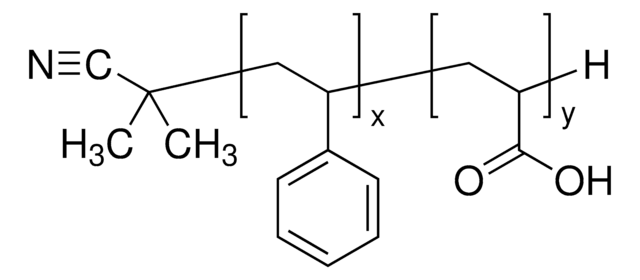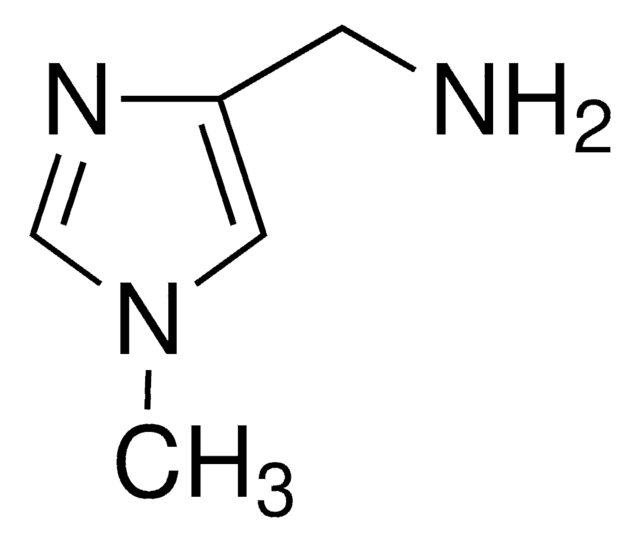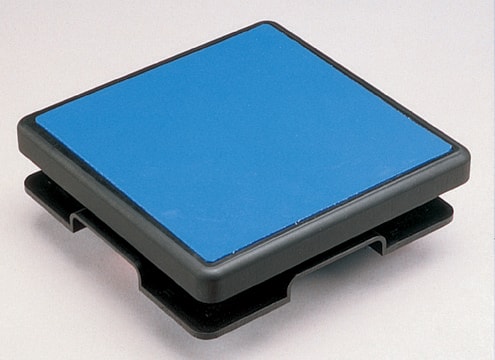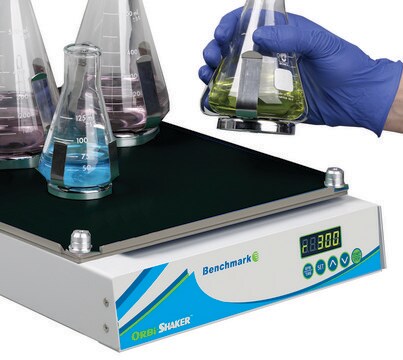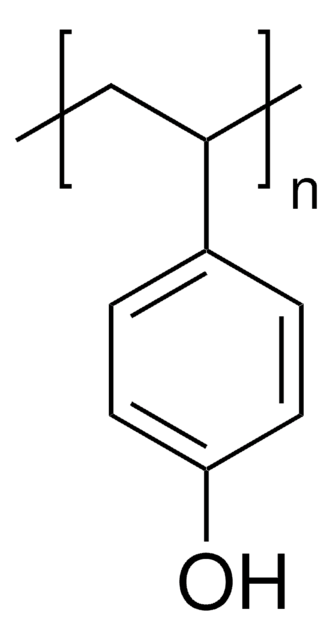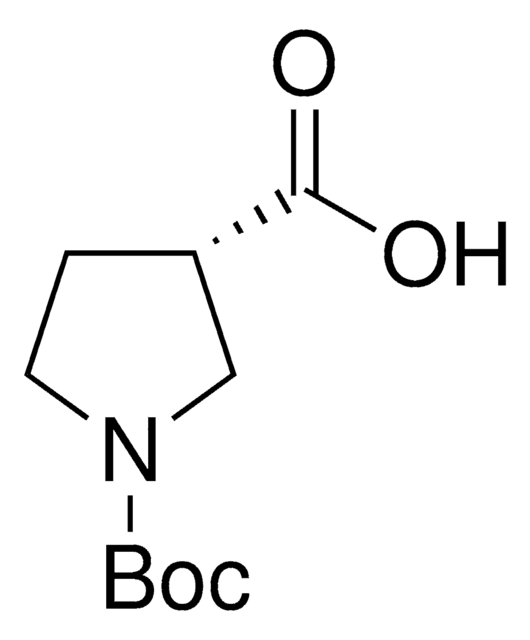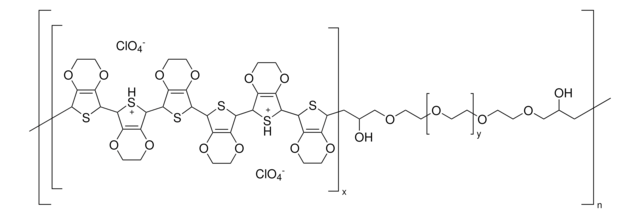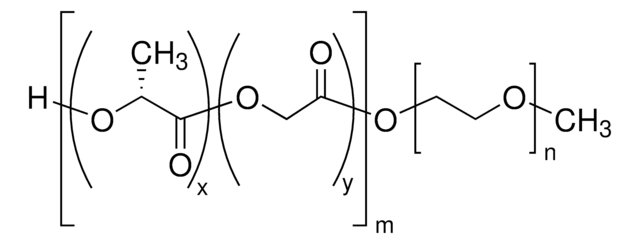735817
Polypyrrol-block-poly(caprolacton)
0.3-0.7 wt. % (dispersion in nitromethane), contains p-toluenesulfonate as dopant
Synonym(e):
Biotron PP-NM, PCL-block-PPy
About This Item
Empfohlene Produkte
Form
liquid (dispersion)
Qualitätsniveau
Enthält
p-toluenesulfonate as dopant
Zusammensetzung
Biotron PP polymer, 0.3-0.7 wt. %
ethanol, 4-8 wt. %
nitromethane, 90-95 wt. %
Konzentration
0.3-0.7 wt. % (dispersion in nitromethane)
Leitfähigkeit
10-40 S/cm (bulk)
Verwandte Kategorien
Allgemeine Beschreibung
Average transmittance: 70-90%
Biodegradble conducting polymer for bomedical applications. PCL diol blocks have average molecular weight 2000 and PPy block have an average molecular weight of 4000 with a 25% doping level. Good biocompatibility with expected weight loss of 40% at 200 days in pH=7 buffer.
Anwendung
Leistungsmerkmale und Vorteile
Vorsicht
Sonstige Hinweise
Rechtliche Hinweise
Signalwort
Danger
Gefahreneinstufungen
Acute Tox. 4 Inhalation - Acute Tox. 4 Oral - Carc. 2 - Flam. Liq. 2 - Repr. 2
Lagerklassenschlüssel
3 - Flammable liquids
WGK
WGK 2
Flammpunkt (°F)
66.9 °F
Flammpunkt (°C)
19.4 °C
Analysenzertifikate (COA)
Suchen Sie nach Analysenzertifikate (COA), indem Sie die Lot-/Chargennummer des Produkts eingeben. Lot- und Chargennummern sind auf dem Produktetikett hinter den Wörtern ‘Lot’ oder ‘Batch’ (Lot oder Charge) zu finden.
Besitzen Sie dieses Produkt bereits?
In der Dokumentenbibliothek finden Sie die Dokumentation zu den Produkten, die Sie kürzlich erworben haben.
Kunden haben sich ebenfalls angesehen
Biomedical Applications
Artikel
The application of conducting polymers at the interface with biology is an exciting new trend in organic electronics research.
Optoelectronic Devices Based on Diketopyrrolopyrrole (DPP)-containing Conjugated Small Molecules
While dye sensitization as the basis for color photography has been accepted for a very long time,1 attempts to use this principle for the conversion of solar light to electricity generally had resulted only in very low photocurrents, below 100 nA/cm2.2
Professor Chen (Nankai University, China) and his team explain the strategies behind their recent record-breaking organic solar cells, reaching a power conversion efficiency of 17.3%.
Unser Team von Wissenschaftlern verfügt über Erfahrung in allen Forschungsbereichen einschließlich Life Science, Materialwissenschaften, chemischer Synthese, Chromatographie, Analytik und vielen mehr..
Setzen Sie sich mit dem technischen Dienst in Verbindung.
